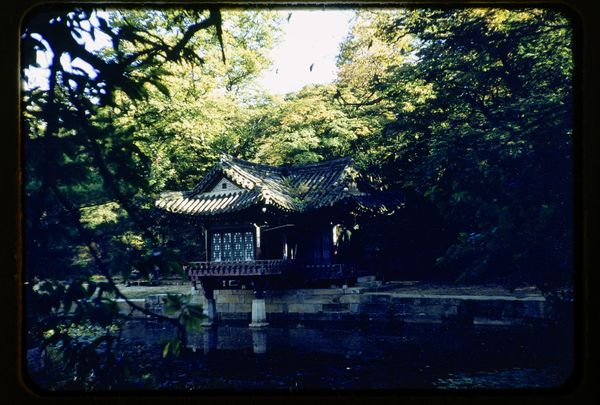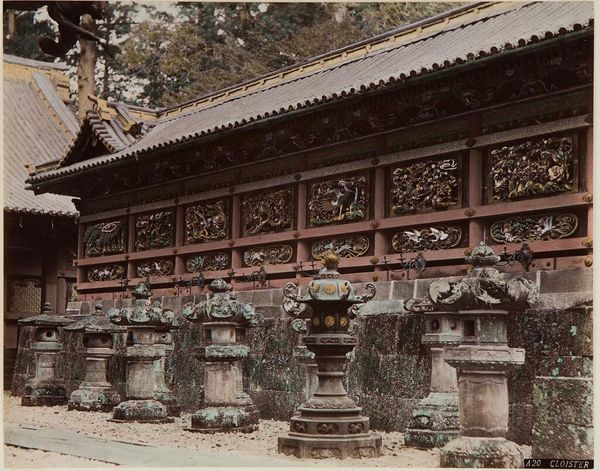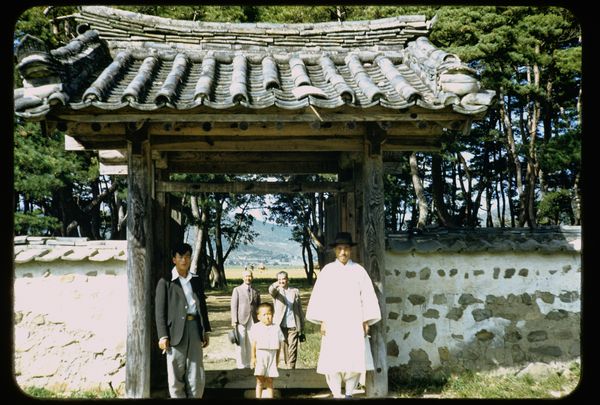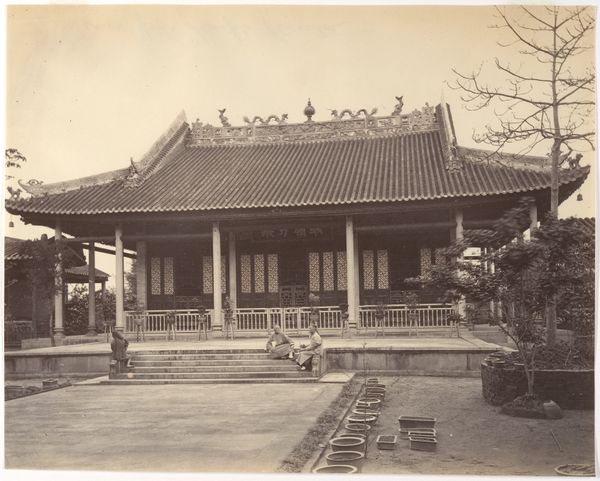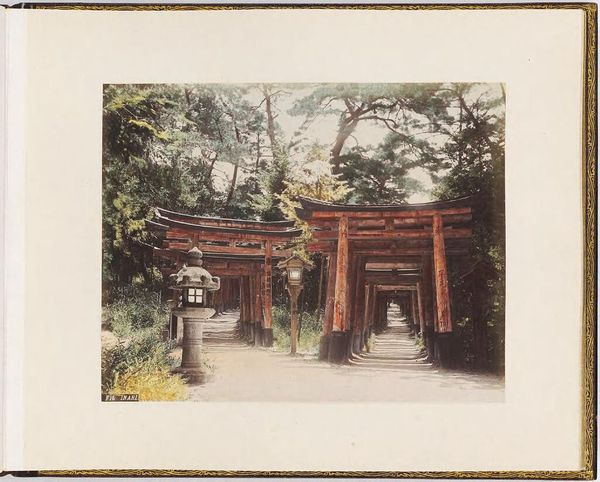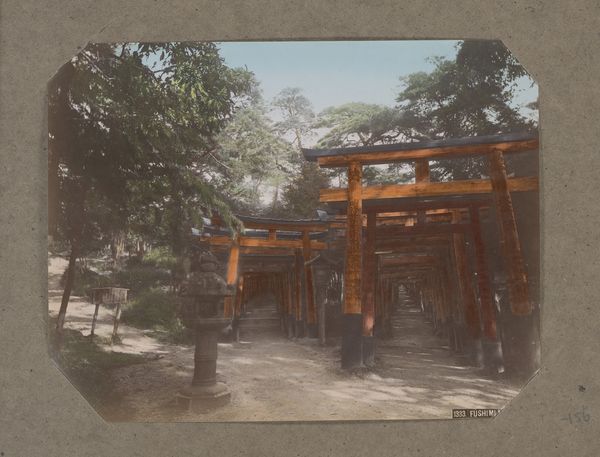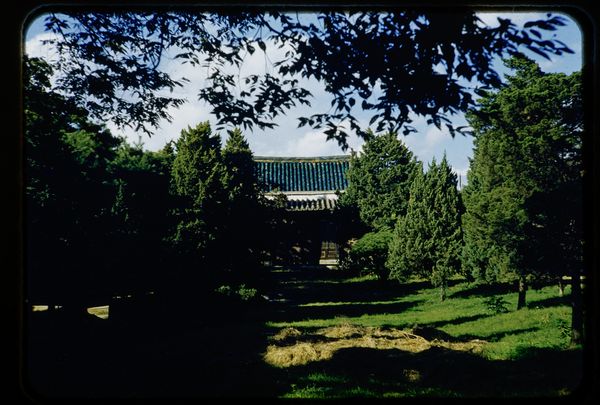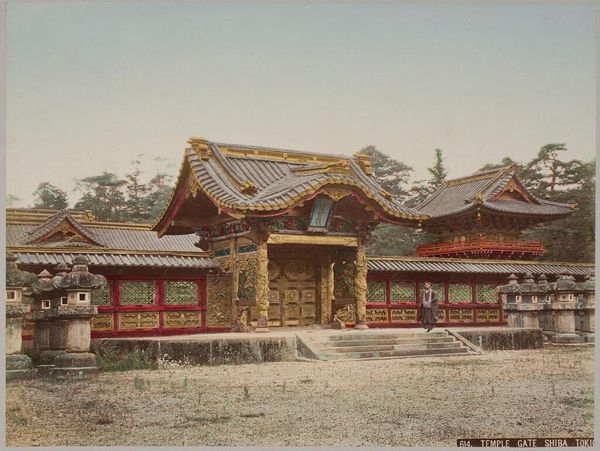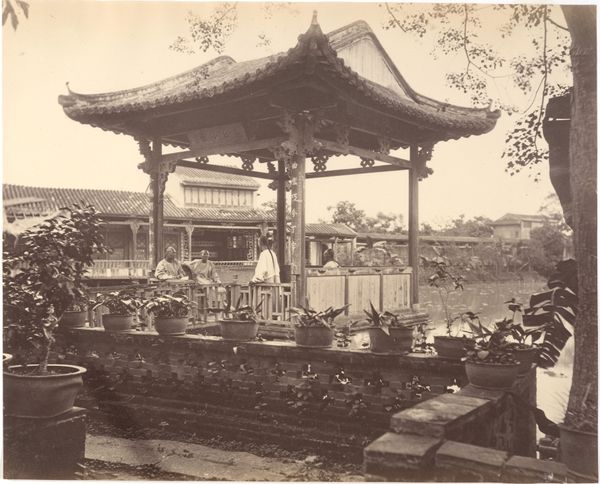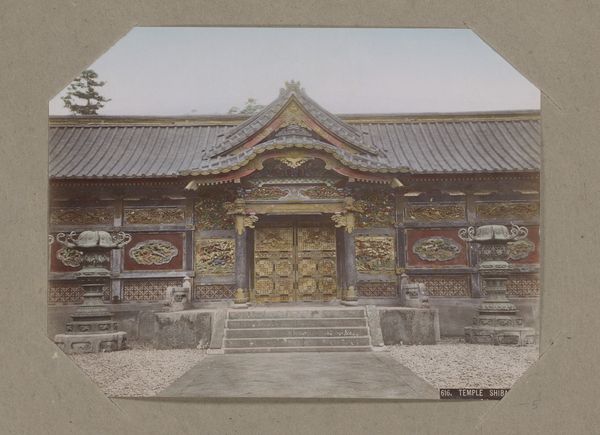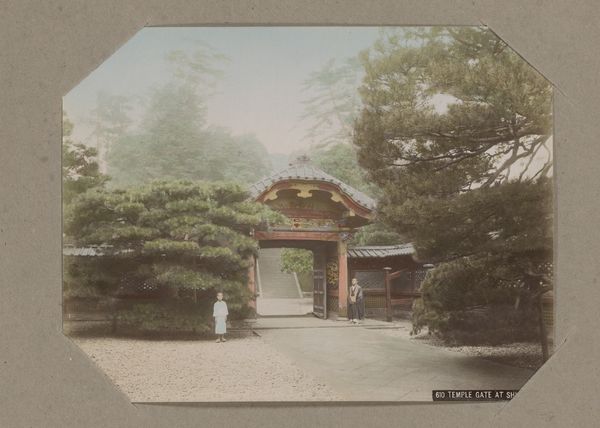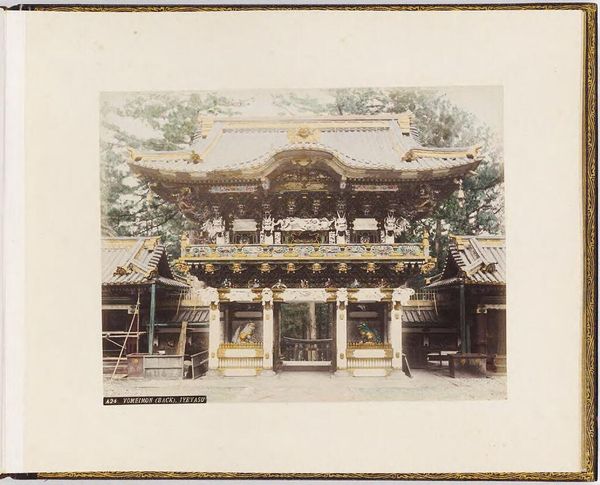
photography, architecture
#
real life photography
#
asian-art
#
landscape
#
photography
#
architecture
Dimensions: height 5 cm, width 5 cm
Copyright: Rijks Museum: Open Domain
Curator: At first glance, it evokes a sense of serene solemnity, doesn't it? Almost as if time has stood still within these stone walls. Editor: We're looking at "Bukkuksa," a 1952 photograph by David Ketel, housed here at the Rijksmuseum. It captures a section of the famed Bulguksa Temple, a Korean Buddhist temple complex. Curator: The architecture speaks of permanence. That layered roofing and the meticulously stacked stones communicate durability—symbols of faith enduring. It projects the collective hope of an era, wouldn't you say? Editor: I think we also have to situate this image within the historical context. The Korean War was raging around this time. For Ketel to focus on the enduring beauty of Bulguksa…it reads to me as a powerful statement of resistance against erasure. A conscious centering of cultural memory. Curator: Absolutely. The composition itself—the way the photographer utilizes light and shadow—emphasizes this continuity. Notice how the structure emerges from shadow, gradually illuminated. Editor: And I am wondering about Ketel himself and his own potential biases when encountering this space as an outsider looking in. Photography as a medium is not a completely objective means of documentation. Curator: Indeed, photography freezes a moment. But it is a subjective observation of time. The architectural elements are full of symbolic significance. The elevated platforms and stairs, for instance, may represent the path to enlightenment. These stone walls speak about more than just architectural construction. Editor: Perhaps the temple served as a social nexus and locus point of collective gathering through political turmoil in the 1950s. Ketel's perspective captures not just stones and mortar, but also silent resilience. Curator: Photography’s beauty here lies in its deceptive simplicity, then. We see an image reflecting our own humanity. The photographer, Ketel, has become a witness—preserving a specific space that will long continue to outlive him. Editor: And hopefully, dialogues like this, examining that space, will give that moment lasting significance in the broader discussion about history.
Comments
No comments
Be the first to comment and join the conversation on the ultimate creative platform.
